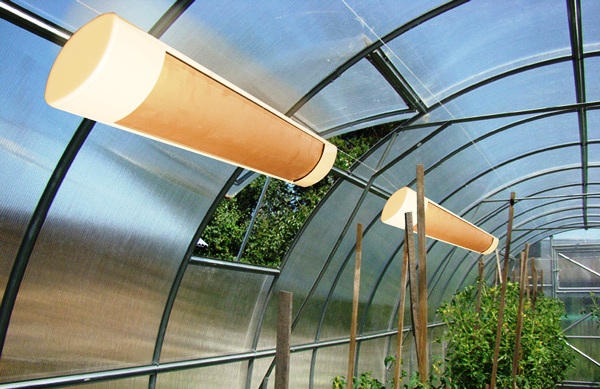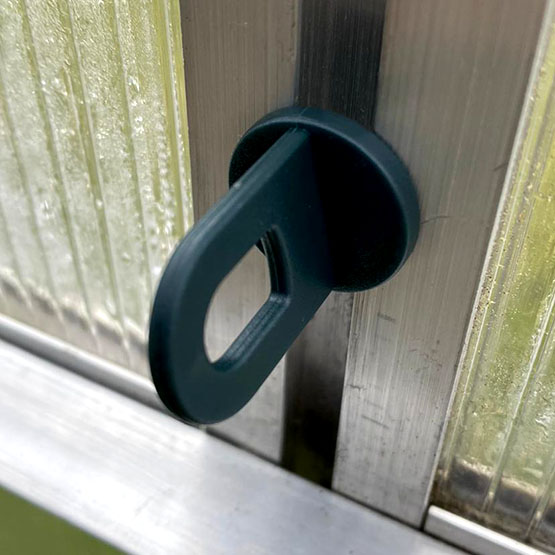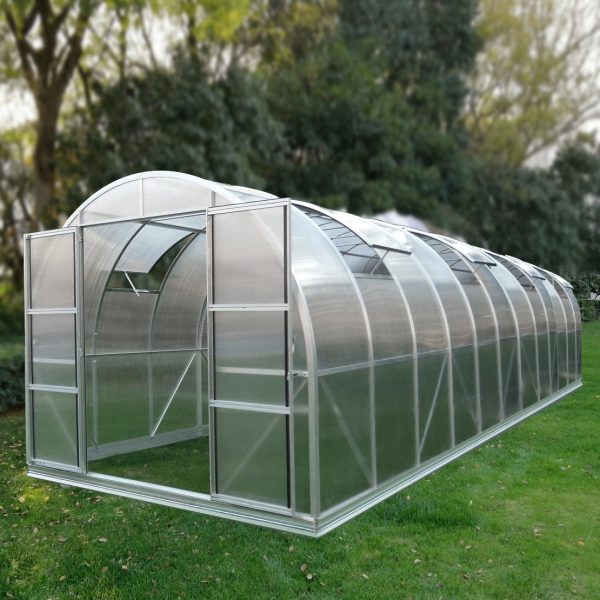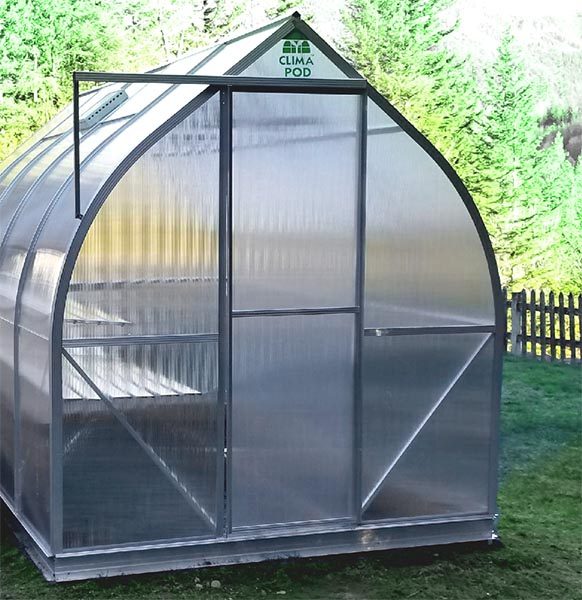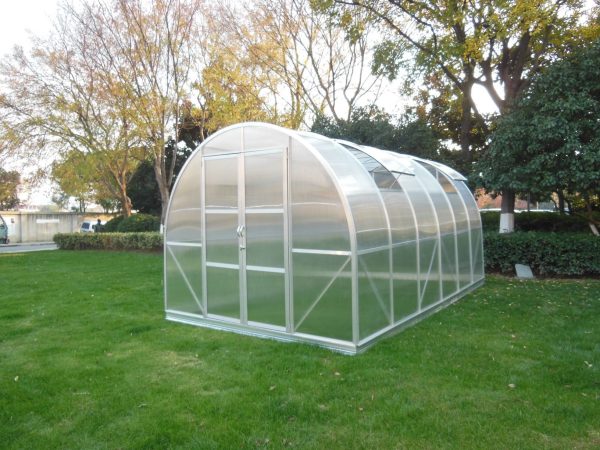In recent years, polycarbonate has been widely used for the manufacture of greenhouses. This material is durable and at the same time quite elastic. It allows you to create structures of rather complex geometric shapes. In addition, it has high light transmission (up to 85% of solar radiation) and excellent thermal insulation. Due to the heat-insulating properties of the material, heating a polycarbonate greenhouse will require less thermal energy than for glass or film structures. This will significantly reduce the financial costs of winter crops grown in them.
Types of greenhouse heating
All this caused a great demand for polycarbonate greenhouses, which, in addition to purely utilitarian use, also became elements of landscape design of the territory of many suburban areas. Moreover, such a design can be bought ready-made, made to order or mounted without any special problems by yourself.
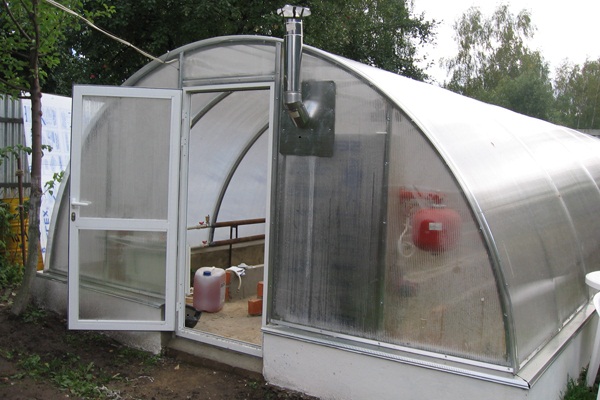
Greenhouses quite allow active operation in the winter, but for this it will be necessary to equip heating and lighting systems. If the building is only warmed up, this will allow the greenhouse season to start a month earlier than usual.
For heating greenhouses in winter and early spring, it is possible to use various types of heating, some of them are easy to do with your own hands, while others will require careful calculations and the involvement of specialists for installation.
Warm beds
Biological heating or the so-called warm beds is the simplest way . In this case, thermal energy is released due to the decomposition of organics as a result of the vital activity of microorganisms. Biofuel is horse manure or compost based on it, which is located under a layer of soil. The heat from the organic layer warms up the root system of plants.
Greenhouse air heating
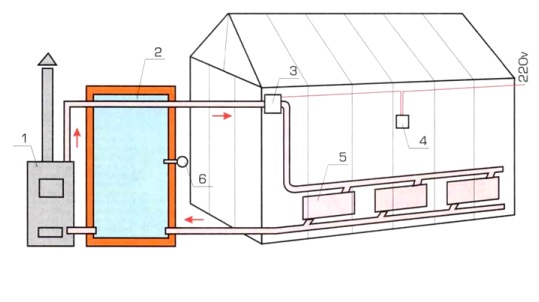
In winter, you can use air heating by moving warm air through the greenhouse. It is carried out by means of electric or gas heaters. Electric heat guns are quite powerful portable fans. In gas heaters, heating is carried out by means of heaters dispersed over the area of the greenhouse, or heated air is distributed using a duct system.
An option for a winter heating system due to air heating is the use of convectors. Only in this case there is no forced distribution of warm air. Heating occurs due to convective flows, which contributes to a more prolonged but uniform heating. Such devices are mainly electrical, but can also be gas.

Gas burner heating
Water heating of the greenhouse in winter is based on a piping system installed under the soil layer and a heating boiler operating on one of the types of fuel: solid fuel, liquid fuel, electric or gas. Which of these types to install for heating greenhouses in the winter sometimes depends on the availability of a particular fuel in the region.
Heating through a resistive cable is quite effective and popular among greenhouse owners. Two types of heat sources are used in this electrical system – a separate heating cable or pre-fabricated heating mats. The cable is laid not only under the soil, but can also be laid in the walls of the greenhouse, providing effective heating even in severe winter cold.
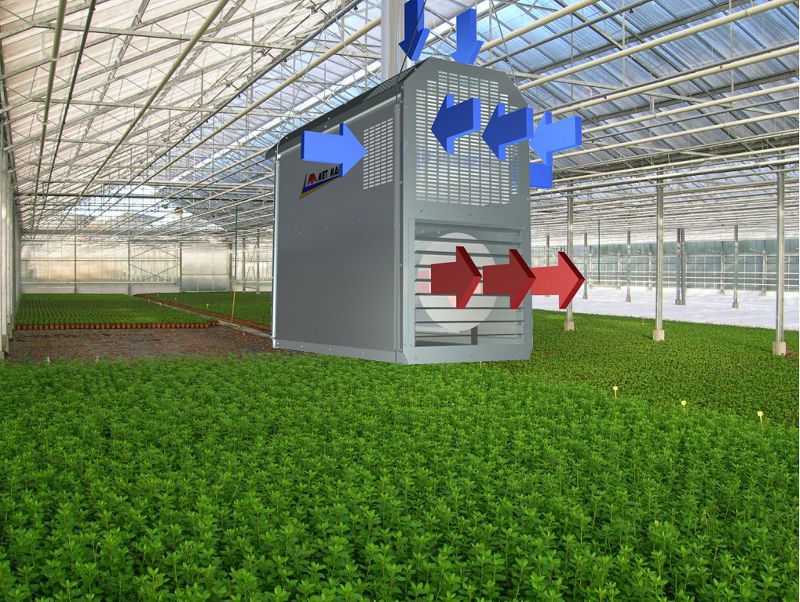
Heating a winter greenhouse with IR sources is considered to be the most progressive method from the point of view of plant ecology.
Is it possible to use IR in polycarbonate greenhouse?
The action of infrared heat sources in its physical essence is similar to heating by sunlight. IR radiation does not heat air, but opaque objects that absorb it. Then, from a heated layer of soil, plant leaves, frame, and other elements, heat is transferred to air through convection. The winter greenhouse warms up similarly to the summer bed heated by the sun.
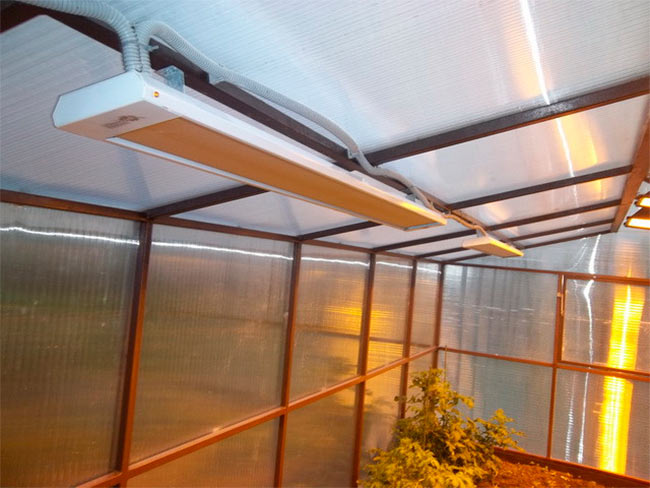
That is, the use of infrared heaters in greenhouses is not only possible, but also the closest to the natural way of heating. In this case, the soil warms up to a depth of 7 centimeters. It creates the right conditions for nutrition and active growth in the root system of plants. While the soil is warming up to +28 ˚С, the air in the greenhouse heats up only to +22 ˚С. In addition, the air does not dry out, there are no drafts and harmful emissions from combustible fuel. Thus, the IR heating system creates the most optimal conditions for development in a winter greenhouse.
